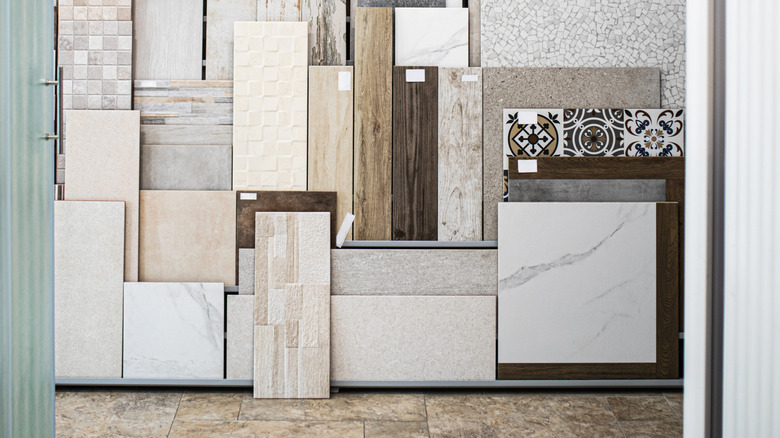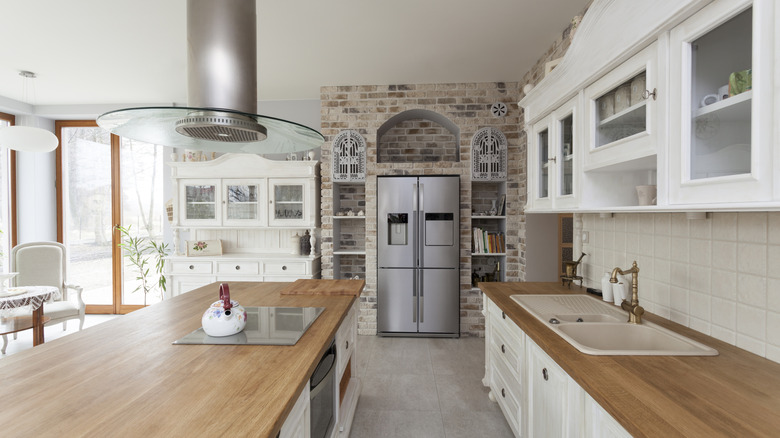The Once-Popular Tile That's Seriously Outdating Your Kitchen Backsplash
In the early 2000s, one design trend that made its way into many kitchens featured tiles with yellow undertones and, more often than not, ornate surface patterns. Unfortunately, if you have these tiles in your kitchen, you probably have a space that looks outdated or stuck in the past. If you haven't guessed already, we're talking about Tuscan-style tiles. Tuscan kitchens have gone out of style, despite their earlier popularity, and the tiles that defined the aesthetic along with them. As interior designer Alice Moszczynski says (per Martha Stewart): "With their heavy textures, warm yellow undertones, and mosaic patterns, they can make a kitchen feel dark and dated."
You may be tempted to add some Tuscan style to your kitchen with a tile backsplash. Think twice. Depending on the style of kitchen you're trying to create, these heavier, often saturated mustard yellow tiles may not work well with the other finishes you want to use in the space. They can also be high maintenance because of the materials used, creating more cleaning work. Many are made from porous, unglazed clays like terracotta or natural stone like travertine. If they're not sealed properly, they soak up stains. You need to avoid using acidic cleaners on most Tuscan tiles, too. Tired of living in the 2000s or want to avoid traveling back to that era via your interior design? There are other ways to add touches of Tuscan warmth to your kitchen.
Update your kitchen with a modern take on Tuscan tiles
The more brashly patterned or colored the Tuscan tile, the more dated it appears. However, if you love the aesthetic, you can still capture the essence of the Tuscan kitchen trend in a more modern way. Pick tiles made from natural materials, such as marble or limestone, in natural hues. This will give you a refined backsplash with subtle texture and colors that are unlikely to go out of style for years to come. The Tuscan aesthetic is all about bringing the outside in — think the rustic vibes of an Italian farmhouse or vineyard cellar door. If you like ornately patterned Tuscan tiles, incorporate them as an accent among neutral tiles instead of crafting an entire backsplash from them.
Alternatively, ditch the Tuscan tiles altogether. To channel the countryside in your kitchen, swap them out for vintage wood shelving, furniture, and décor. If you're renovating your entire kitchen, consider adding architectural elements of the Tuscan countryside, such as arched doorways, unfinished ceiling beams, and wrought iron cabinet pulls. Pairing these design features with contemporary appliances, countertops, tiles, and sleek furniture provides the rustic warmth of the 2000s Tuscan kitchen style without the gloom.

